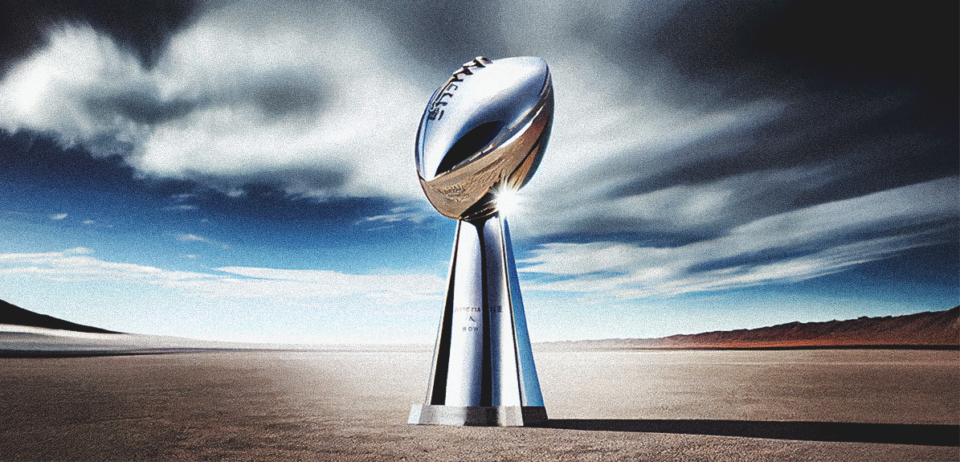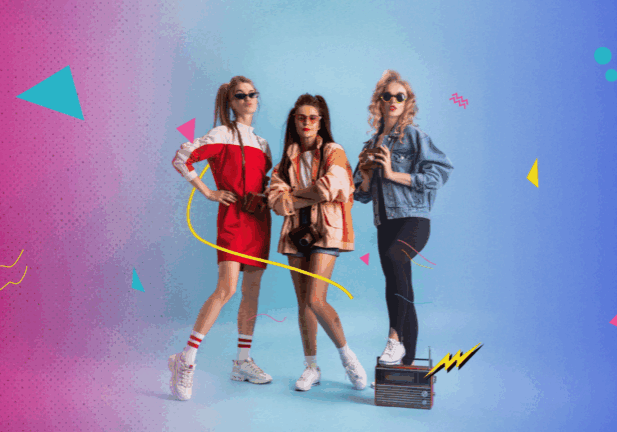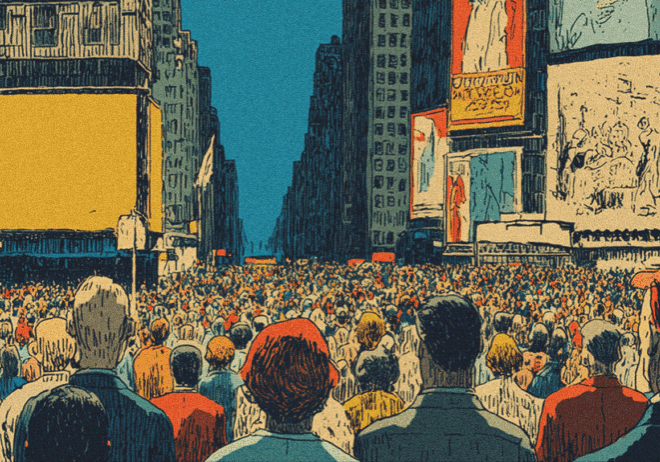
Super Bowl 2025 Ads: A Masterclass in Celebrities, AI, and Humor
The Super Bowl isn’t just about the game anymore—it’s an all-out marketing showdown. With every passing year, it’s like brands are in their own competition, trying to outdo each other with the most talked-about commercials. In 2025, they took it to the next level.
This year’s Super Bowl 2025 ads not only entertained but also reflected the evolving landscape of marketing, where technology and storytelling converge. From big-name endorsements to AI-driven storytelling, brands didn’t just entertain; they demonstrated how marketing is evolving at the intersection of storytelling and technology. But what was the real impact? These ads weren’t just about laughs—they set a new playbook for the future of advertising.
Let’s explore how this unique blend created memorable ads that not only entertained but also reflected the evolving landscape of marketing.
Celebrities take over Super Bowl 2025 ads
The Super Bowl 2025 roster was no exception, as it has always relied heavily on celebrity endorsements. A wide range of celebrities were hired by brands to add personality and relatability to their advertising efforts, resulting in memorable moments that connected with the large Super Bowl viewership.
The Super Bowl 2025 ads again leaned heavily on celebrity endorsements, proving that star power still sells. Brands strategically paired Hollywood icons, musicians, and sports legends to create emotional connections and unforgettable moments.
Here’s how some of the biggest names brought brands to life this year:
Uber Eats: A Star-Studded Ensemble
Uber Eats’ 2025 Super Bowl ad featured a diverse mix of A-listers—Matthew McConaughey, Kevin Bacon, Greta Gerwig, Charli XCX, and Martha Stewart. The humor? Each celebrity forgets an essential item, only to be reminded that Uber Eats delivers more than just food.
Behind the Scenes: McConaughey’s Method Acting
Martha Stewart later revealed that McConaughey’s intense method acting—grunting, heavy breathing, and jumping—was so over the top, it left her visibly shaken on set.
Stella Artois: Damon and Beckham’s Twin Act
Stella Artois played the long-lost twins card, casting Matt Damon and David Beckham as separated-at-birth siblings reuniting over a beer. The comedic contrast between the Hollywood actor and football legend made for a funny and heartfelt ad.
Michelob Ultra: Pickleball with Dafoe and O’Hara
Michelob Ultra capitalized on the pickleball craze, casting Willem Dafoe and Catherine O’Hara as hilariously intense, over-the-top competitors. By tapping into a growing sports trend, the brand ensured relevance beyond just game-day viewers.
Hellmann’s: A Nostalgic Twist with Ryan and Crystal
Hellmann’s went full nostalgia mode, recreating the famous deli scene from When Harry Met Sally—but this time, with Meg Ryan, Billy Crystal, and Sydney Sweeney. The mix of classic and contemporary stars appealed to both long-time fans and younger audiences.
Jeep: Harrison Ford Advocates Freedom of Choice
Jeep enlisted Harrison Ford to promote both electric and gas-powered vehicles, emphasizing consumer autonomy with the tagline, “This is America. You decide.” Ford’s iconic persona added gravitas to the message, appealing to a broad audience and reinforcing Jeep’s commitment to offering diverse options for its customers.
Instacart: A Mascot Extravaganza
Instacart’s “We’re Here” spot brilliantly brought together nine iconic brand mascots—Chester Cheetah, Mr. Clean, the Energizer Bunny, and more—in a playful 30-second ad. This creative approach leveraged nostalgia and instant brand recognition, creating a delightful and memorable experience for viewers.
AI integration: Brands embrace the future in Super Bowl 2025
The Super Bowl has always been more than just a football game; it’s a cultural phenomenon where advertisements become as anticipated as the on-field action. A notable change occurred in 2025 when companies easily incorporated artificial intelligence (AI) into their ads, demonstrating the technology’s increasing impact on daily life.
This year’s advertisements combined creativity and narrative to enthrall viewers while demonstrating AI’s revolutionary potential.
Meta: “Who Eats Art?”
Chris Hemsworth and Chris Pratt, equipped with Ray-Ban Meta smart glasses, navigated an art gallery where Pratt’s glasses identified a banana duct-taped to the wall as a $6.2 million artwork.
Unfazed, Hemsworth ate the banana, leading to a frantic search for a replacement, culminating in a humorous encounter with Kris Jenner. This ad seamlessly blended AI technology with celebrity humor, highlighting the product’s features in an engaging narrative.
OpenAI: “The Intelligence Age”
Making its Super Bowl debut, OpenAI presented a 60-second animated journey through humanity’s significant technological milestones, culminating with ChatGPT.
The ad positioned the chatbot as the next pivotal innovation, emphasizing AI’s transformative potential.
Google’s “Dream Job”
Google used a story in which a parent uses Gemini Live, the phone’s built-in AI assistant, to help him get ready for a job interview to demonstrate the AI capabilities of its Pixel 9 smartphone.
The advertisement positioned Gemini as a smooth, practical companion by demonstrating the intersection of AI technologies and ordinary situations.
Squarespace: “A Tale as Old as Websites”
Actor Barry Keoghan and his donkey, Mosley, embarked on a quest to help small businesses establish their online presence using Squarespace’s AI-driven tools.
The ad subtly highlighted the platform’s simplicity and accessibility, displaying how effortlessly anyone can create a website.
Why humor still wins in Super Bowl 2025 ads
The Super Bowl has long been a showcase for advertisers to connect with audiences through humor, and the 2025 lineup was no exception. Brands employed wit and creativity to leave lasting impressions, blending celebrity cameos, nostalgic nods, and clever storytelling.
Avocados from Mexico: “Guacline”
Avocados from Mexico introduced the “Guacline,” featuring an AI-generated deepfake of former NFL star Rob Gronkowski. Fans could interact with the digital avatar, engaging in humorous exchanges centered around guacamole recipes. This innovative use of AI provided a personalized and entertaining experience, blending technology with lighthearted content.
Lays: “The Little Farmer”
Lay’s took the heartwarming route, telling the story of a young girl nurturing a single potato—which eventually became a bag of Lay’s, shared with her loved ones. The ad played on sentimentality and nostalgia, making it one of the night’s most touching moments.
Crafting connections: The evolution and future of Super Bowl advertising
The Super Bowl has long been a premier stage for advertisers, with brands vying for attention through innovative and memorable commercials. In 2025, a notable shift occurred as advertisers moved from rapid-fire humor to narrative-driven storytelling, aiming to forge deeper connections with audiences.
This evolution and escalating financial investments set the stage for intriguing developments in 2026. As brands transitioned from quick jokes to more substantial narratives in their Super Bowl commercials. This approach often incorporated nostalgia and feel-good themes, aiming to resonate personally with viewers. For instance, Hellmann’s reunited Meg Ryan and Billy Crystal, invoking memories of their classic film “When Harry Met Sally,” to create an emotional connection while promoting the brand.
The financial stakes of Super Bowl advertising have reached unprecedented heights. In 2025, the cost for a 30-second spot soared to over $8 million, reflecting the event’s massive viewership and cultural significance. This large investment highlights how crucial it is for marketers to leave a lasting impression throughout the game.
Cut to the chase
The Super Bowl 2025 ads marked a shift from quick-hit humor to more immersive storytelling. Brands leaned into nostalgia, AI, and feel-good narratives to create deeper emotional connections.
But with 30-second ad slots hitting $8 million, brands are facing skyrocketing stakes. In 2026, expect even bolder collaborations, more AI integration, and high-profile celebrity pairings as advertisers fight for the ultimate Super Bowl spotlight.

